How to Grow Blueberries for a Harvest That's Worth the Wait

By Judy Schumer
Having one of the tastiest superfoods in your own yard is a great reason for you to learn how to grow blueberries. Blueberries are antioxidant- and vitamin-packed delights that can be eaten fresh off the bush or in a variety of ways, from breakfast to dessert. Fresh blueberry pancakes and homemade blueberry buckle are winning ways to get a nutrient boost from your favorite treats.
As long as you have the right soil, sunlight, and provide the care that blueberries need to produce a bountiful harvest, these fruits are pretty easy to grow. They’re also a great way to add pretty landscaping that bears fruit. The leaves of blueberry bushes turn a beautiful scarlet color in the fall while producing delicate bell-shaped flowers in the spring.
Read on to learn where and how to grow blueberries, how to care for blueberries as they grow and mature, and how to harvest the fruits of your labor.
Photo via My Garden Shine
Where to Plant Blueberries
Site selection is a key part to successfully growing blueberries. Although these plants can grow in most of the U.S., they’re pretty picky about the amount of sun they need and the type of soil they’re planted in.
Climate Zone
Blueberries produce fruit in the spring and early summer in climate Zones 3-9 (check your climate zone here).
Sun
Bushes require full sun for about eight hours a day to grow and thrive, so be sure the bushes are planted in a sunny location away from trees that affect their ability to soak in as much sunshine as possible.
Soil Type
The type of soil blueberries are planted in is crucial, as the plant prefers acidic soil with a pH between 4.0 and 5.2. Avoid clay soil, or amend it if needed as it holds too much water for blueberries to survive.
To find out what type of soil you have, get it tested at your local garden center or conduct your own soil test at home. If you need to acidify your soil, prepare it about six months before you plant your blueberries by thoroughly mixing granular sulfur into your soil.
When to Plant Blueberries
You’ll need to consider two things when determining when to plant blueberries:
Age of the Plant
Choose two- to three-year-old bare-root plants to avoid the fragility of younger and older plants. More immature plants need to age to yield a blueberry crop, while older plants don’t handle transplanting well—doing so can often result in shock and the resulting lack of fruit for years afterward. The young plants you'll find at your nearest garden nursery are likely the ideal age for taking home and planting.
Time of Year
Early spring is the best time to plant blueberries. As with planting most other plants, wait until the threat of frost has passed in your neck of the woods.
Photo via Ann S
How to Plant Blueberries from Seed
A word of caution before you get started: Growing blueberries from seeds is a multi-year process, and you won’t be getting fresh blueberries off the bush the same year that you plant seeds. Unlike most plants that start from seed trays inside then get transplanted outdoors the same year, blueberry plants need to mature to safely take root and produce fruit.
Also, when blueberries are in a seed state, they are in a deep rest period and they need time to wake up from their dormancy. Do this by placing the seeds in an airtight plastic bag and putting them in the freezer for 90 days before planting.
After your seeds have rested for 90 days, remove them from the freezer and plant the seeds as follows:
Tools and Materials Needed:
- Deep baking sheet or oblong serving tray
- Blueberry seeds
- Sphagnum moss
- Newspaper
- Spray bottle filled with distilled water
- Peat moss
- Sand
- Potting soil
- Long planting container like a window box
Step 1: Sow the Seeds
Spread an even layer of sphagnum moss over your tray. Sprinkle the blueberry seeds over the moss, then cover the seeds with another layer of sphagnum moss.
Step 2: Cover and Germinate
Cover the tray completely with newspaper. Place the tray in a warm area that maintains an average temperature of 70 degrees Fahrenheit. Remove the newspaper and lightly spray the moss every other day to keep moist, returning the newspaper when you're done.
Step 3: Remove the Newspaper
Once your seedlings emerge through the moss, remove the newspaper and place the tray in a well-lit area. Avoid direct sunlight, but provide about eight hours of indirect light daily.
Step 4: Transplant the Seedlings
Once the seedlings are about three inches tall, it’s time to transplant them into a long planting container like a window box to nurse them in until they’re old enough to be placed outside. Place equal parts of the potting soil, sand, and peat moss into the window box. Transplant your seedlings into the window box, spacing each plant six inches apart.
Keep the box indoors and continue to water the blueberry plants, keeping them moist and exposed to eight hours of indirect sunlight daily.
Once your seedlings reach about two inches tall, you can thin them out and transplant them into the ground following the instructions for in the next section.
How to Plant Blueberry Transplants
Once your soil has been properly prepared and tested for the correct acidity, you can plant your blueberry bushes straight into the ground. Remember to plant bushes that are two to three years old in early spring.
Tools and Materials Needed:
- Ruler or measuring tape
- Blueberry plants
- Small garden shovel
- Loam
- Peat moss
- Bucket or wheelbarrow
- Mulch
- Watering can
Step 1: Dig Holes
Dig holes that are about 18 to 20 inches deep and about 18 inches wide. You want the root ball to be covered, but not too deeply. Space the holes about 4 feet apart, with 8 feet in between each row of blueberry bushes if you’re planting multiple.
Step 2: Prepare the Planting Hole
In a bucket or wheelbarrow, mix two parts loam with two parts peat moss. Place a layer (about an inch deep) of the mixture into each planting hole.
Step 3: Plant the Blueberries
Place the blueberries into the hole, carefully setting the root ball just below the top of the hole with the roots spread out. Fill the hole with garden soil and pack tightly around the roots.
Step 4: Mulch
Once your blueberries are planted, spread a layer of organic mulch over the planting area to keep moisture in the soil.
Step 5: Water the Plants
Water the plants with enough water to moisten the soil.
Photo via LeeEllen Zahorsky
How to Care for Blueberry Plants
Growing blueberries is a relatively easy endeavor because they don’t require much care beyond watering, maintaining the mulch, and checking (and adjusting if needed) the pH levels of the soil. The following are simple ways to care for your blueberries.
Water
Provide your blueberries with about 2 inches of water per week, adding more as needed during hot, dry periods. The soil should always be moist but not soggy. The best method for watering blueberries is via a drip irrigation system, which is a hose that delivers small amounts of water to the plants on a continual basis.
Mulch
As the organic mulch decomposes, add another layer to keep the soil consistently moist. Each layer of mulch helps add nutrients to the soil as it decays and becomes a part of the soil itself. Add an extra layer of mulch in late fall to help protect the plants from extreme changes in soil temperature.
Fertilizer
You will not need to fertilize your blueberries the first year after planting. In the spring, the year after they were planted, fertilize your blueberries with one ounce of 10-10-10 fertilizer per bush.
Increase the amount of fertilizer per year by one ounce per bush each year, with a maximum of eight ounces.
Pruning
For the first two years after planting, the only pruning you should do is to remove any blossoms the plant produces to stop the plant from growing fruit. Patience will pay off, as the plant will reserve its young energy to grow strong and healthy, creating a more bountiful harvest in the following years.
When your blueberry bushes are in their fourth season, you’ll want to prune them to encourage new, compact growth. Wait until the plant is dormant in the late winter and prune 1/4 to 1/3 of the plant’s mass. Use sharp pruning shears to avoid damaging the plant and thin out any tangled or dead branches to allow sunlight to reach the main stem of the bush.
Pests and Diseases
Just like any plant, blueberries can fall victim to hungry predators. Here are some common blueberry pests and diseases to watch out for and how to fix and prevent them:
Birds and Wildlife: The biggest threats to your blueberry crop are birds and other wildlife. Once your garden has been established as a blueberry buffet to animals in your area, it will become a constant source of food for them and a non-existent harvest for you.
The best way to preserve your blueberries is to use bird or wildlife netting. You can drape the netting over a few stakes to provide an even cover for the blueberry bushes, or you can build a blueberry bush cover. Depending on the types of birds or wildlife in your area, you may need heavy-duty netting—check your local garden center for guidance.
Blueberry Maggots: Another common pest is the blueberry maggot. If you notice small insects flying around the blueberry bushes in your garden, there is a good chance you have blueberry maggots. To test your crop, mix two teaspoons of salt in a cup of water and submerge a few blueberries in the water. Wait about 15 minutes. If worms crawl out of the blueberries, you have blueberry maggots.
Don’t worry, your blueberries aren’t doomed; they’re actually still edible. Just make sure that, when you harvest the blueberries, you stow them in the refrigerator for 48 hours to kill the maggots. We know this sounds gross, but maggots have been present in more store-bought fruits than you might realize. They can be safely eaten because the berries are refrigerated before being transported to stores.
You can prevent the mature flies from laying more eggs, which then become maggots, by setting up traps. Coat an apple with sticky fruit fly attractant and hang it near the affected blueberry bush. The flies will land in the stickiness and stay trapped until they die.
Caterpillars: There are many different types of caterpillars, some of them attracted to blueberry bushes. They’ll consume the leaves of the bush, leaving it barren by the time they’ve finished feeding. To get rid of caterpillars, apply an organic insecticide around the blueberry bush, treating it conservatively to avoid affecting friendly insects.
Mummy Berry: Mummy berry is caused by an airborne fungus that causes your blueberries to become gray, stiff, and shriveled. Left alone, the fungus can spread, severely damaging your crop.
To stop the fungus from spreading, remove any mummified berries and throw them out in a sealed trash bag to avoid the spread of fungal spores. Once the growing season has ended, cover the base of the blueberry bushes with fresh mulch. Because the disease is airborne, covering the spores will kill them off and prevent the disease from spreading.
How to Harvest and Store Blueberries
Blueberries are a summer fruit, with harvesting taking place in July and August. Waiting for a blueberry harvest requires some patience; you may be able to harvest a few berries on three-year-old bushes, but most blueberry bushes don't fully mature and produce until they’re about six years old.
Once the berries turn blue, wait about a week before harvesting them. Timing is key, as you don’t want to leave the ripened blueberries on the stem too long, or they’ll drop right to the ground. Check the blueberries every day or so by lightly wiggling the stem; they should easily fall into your hand when they’re ready.
Once you harvest your blueberries, place them into the refrigerator. Wash them right before using. You can preserve and freeze blueberries in freezer storage bags for up to 12 months. Or, you can also dehydrate blueberries to use in recipes all year long!
Do you grow blueberries? What are your favorite ways to use them? Let us know in the comments!





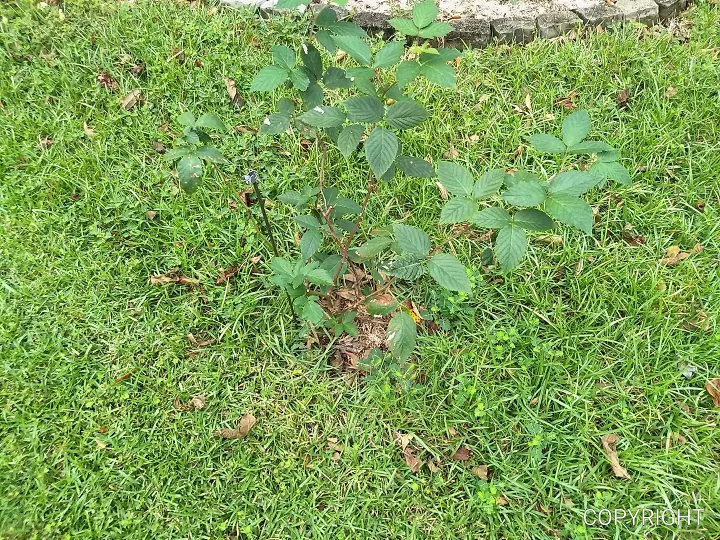



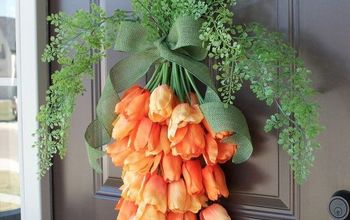


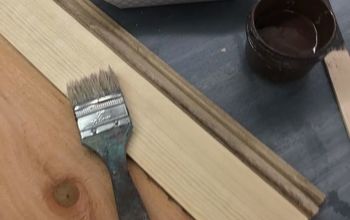
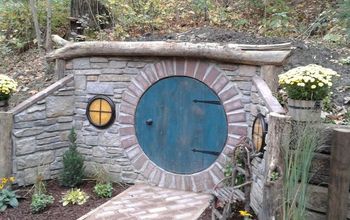



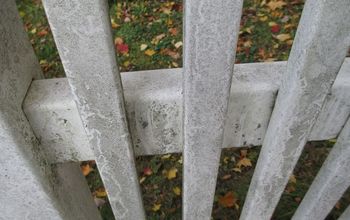
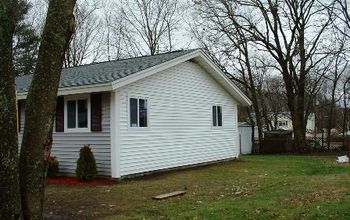







Frequently asked questions
Have a question about this project?